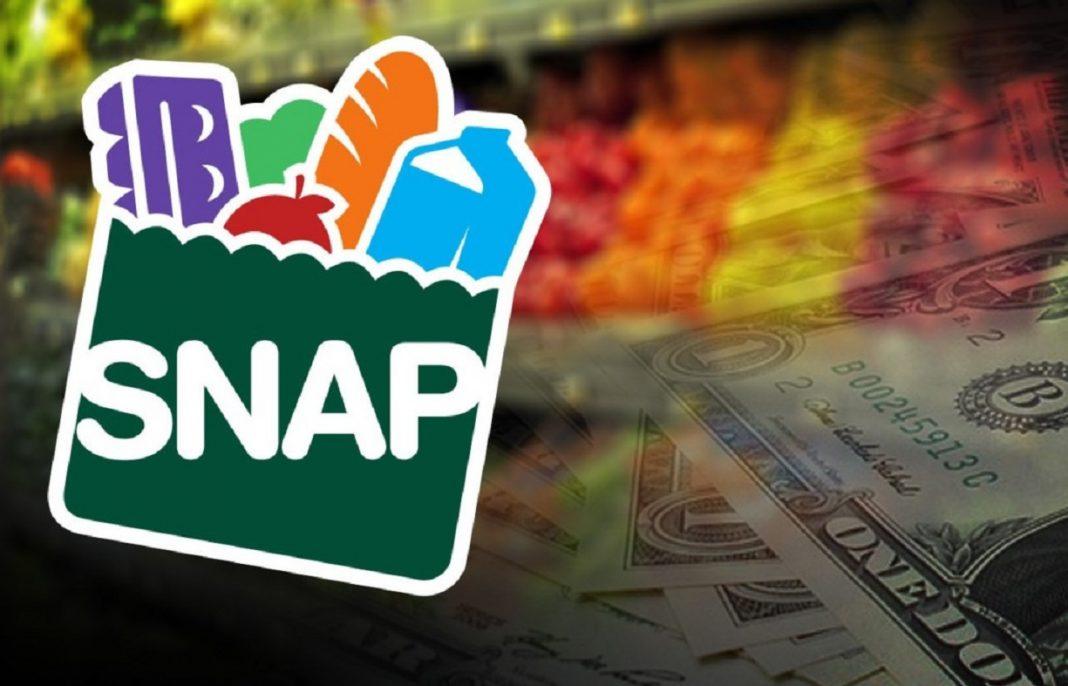
For people trying to get a step out of poverty, Donald Trump and the USDA are going to make it much harder. The SNAP program could see millions lose food stamp benefits with a proposal introduced Tuesday.
The U.S. Department of Agriculture introduced new rules that could wind up with around 3.1 million people losing their food stamp benefits under the Trump administration’s proposal to tighten automatic eligibility requirements for the food stamp program.
The Agriculture Department said Tuesday that the rule would close “a loophole” that enables people receiving only minimal benefits from the Temporary Assistance for Needy Families program to be eligible automatically for food stamps without undergoing further checks on their income or assets.
“For too long, this loophole has been used to effectively bypass important eligibility guidelines. Too often, states have misused this flexibility without restraint,” Agriculture Secretary Sonny Perdue said in a statement.
USDA officials said the proposal was aimed at closing a loophole that was famously exploited by a wealthy Minnesota man, Rob Undersander, who claims he received food stamps for 19 months despite owning significant assets such as property and bank accounts.
The proposed rule is the latest in the Trump administration’s efforts to cut back on the Supplemental Nutritional Assistance Program or SNAP, the official name of the food stamp program. It also has proposed to tighten work requirements for those who receive federal food assistance.
USDA estimates that 1.7 million households — 3.1 million people — “will not otherwise meet SNAP’s income and asset eligibility prerequisites under the proposed rule.” That would result in a net savings of about $9.4 billion over five years.
An unpublished version of the proposed rule acknowledges the impact, saying it “may also negatively impact food security and reduce the savings rates among those individuals who do not meet the income and resource eligibility requirements for SNAP or the substantial and ongoing requirements for expanded categorical eligibility.”
Sen. Debbie Stabenow, D-Mich., called the proposal “yet another attempt by this administration to circumvent Congress” and that the effect would be to “take food away from families, prevent children from getting school meals, and make it harder for states to administer food assistance.”
Congress has rejected previous, similar attempts to change the expanded automatic eligibility provisions, most recently during the farm bill debate in 2018.
About 40 million people participated in SNAP in April 2019, down from more than 38 million a year earlier.
Under current law, states may automatically make people eligible for food stamps, if they meet income and other requirements for TANF. USDA says 43 states have expanded that to include households that it says “barely participate” in TANF. The provision is called “expanded categorical eligibility.” Current rules give states latitude to raise SNAP income eligibility limits so that low-income families with housing and child care costs that consume a sizable share of their income can continue to receive help affording adequate food.
USDA said the policy has resulted in people receiving food stamps who don’t need it and wouldn’t qualify under regular program rules.
Ellen Vollinger, legal director of the Food Research & Action Center, said the proposal was troubling and that the government should “put attention on how to help more people, not undercut supports for them and make their struggle against hunger even harder.”
She said the department didn’t seem to address a resulting loss of school meals, which she said the Congressional Budget Office included in its analyses of previous, similar proposals. “It’s another hit on hunger,” she said.
Under the proposal, to qualify for automatic eligibility, people would have to get at least $50 a month in benefits from TANF for a minimum of six months.
Perdue said the change is necessary for “preventing abuse of a critical safety net system so those who need food assistance the most are the only ones who receive it.”
Stacy Dean, vice president of food assistance policy at the Center on Budget and Policy Priorities, said limiting access to SNAP would overwhelmingly affect working families, seniors and people with disabilities. It could encourage some recipients to spend down their savings or to work less to continue to qualify.
“Instead of punishing working families if they work more hours or penalizing seniors and people with disabilities who save for emergencies, the president should seek to assist them with policies that help them afford the basics and save for the future,” she said.
The proposal begins a 60-day public comment period Wednesday, and those comments must be reviewed before the proposal can go into effect. The last USDA proposal on SNAP received more than 100,000 comments.
To be eligible for SNAP, a household’s gross income must be below 130 percent of the federal poverty line. In 2019, that works out to $32,640 a year for a family of four. Democrats pointed out that the benefit amounts to $1.40 per person per meal.
Currently, households remain eligible with up to $2,250 in countable assets (such as cash or money in a bank account) or $3,500 in countable assets if at least one member of the household is age 60 or older, or is disabled. These amounts are updated annually.
The rule, expected to be published in the Federal Register on Wednesday, is open for public comment for 60 days.

